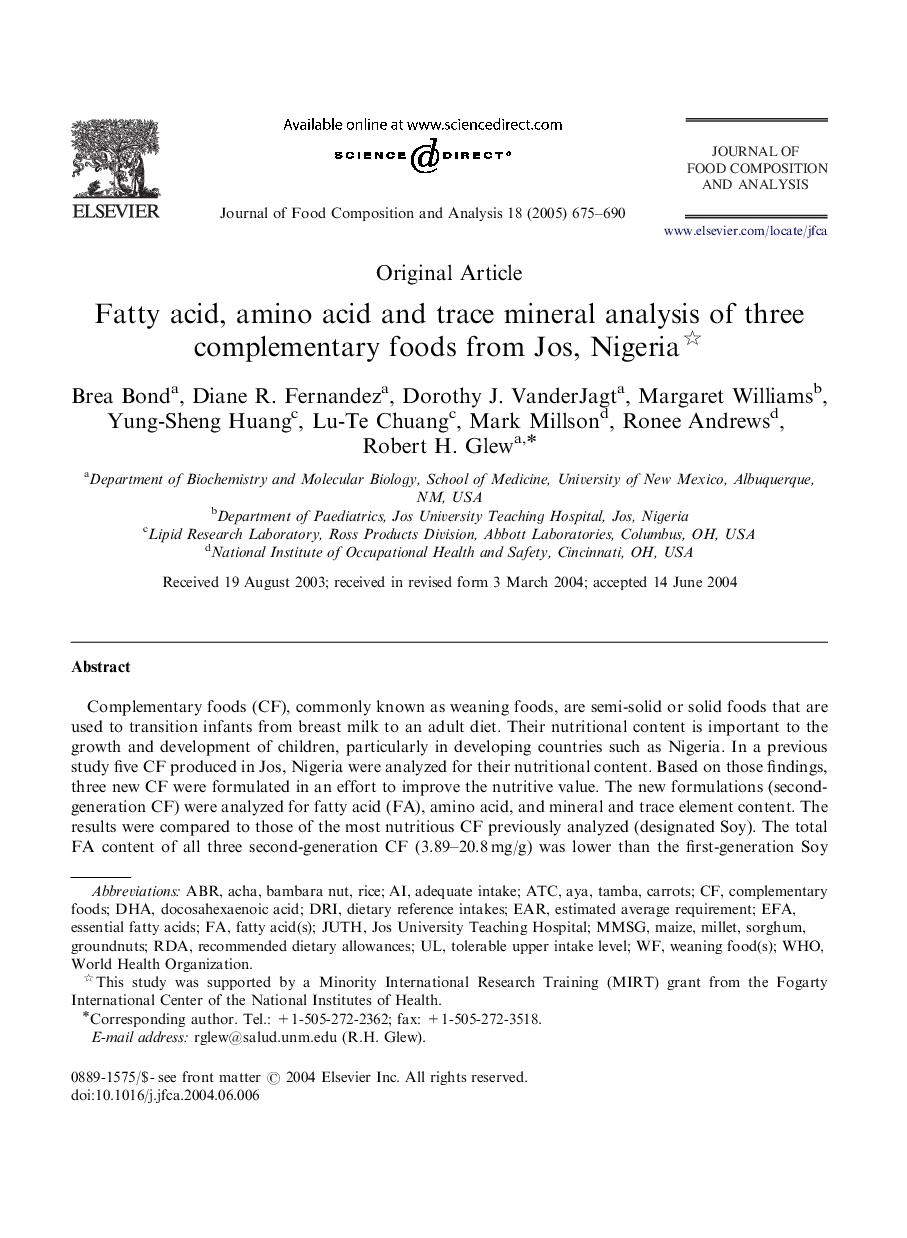| Article ID | Journal | Published Year | Pages | File Type |
|---|---|---|---|---|
| 10553017 | Journal of Food Composition and Analysis | 2005 | 16 Pages |
Abstract
Complementary foods (CF), commonly known as weaning foods, are semi-solid or solid foods that are used to transition infants from breast milk to an adult diet. Their nutritional content is important to the growth and development of children, particularly in developing countries such as Nigeria. In a previous study five CF produced in Jos, Nigeria were analyzed for their nutritional content. Based on those findings, three new CF were formulated in an effort to improve the nutritive value. The new formulations (second-generation CF) were analyzed for fatty acid (FA), amino acid, and mineral and trace element content. The results were compared to those of the most nutritious CF previously analyzed (designated Soy). The total FA content of all three second-generation CF (3.89-20.8 mg/g) was lower than the first-generation Soy mixture (105 mg/g). The content of linoleic and α-linolenic acids among the second-generation CF (1.64-10.1 and 0.084-0.63 mg/g, respectively) was also lower than the Soy CF (59.7 and 7.46 mg/g). The second-generation CF all had higher iron content than Soy (138-288 versus 98.1 μg/g). The amounts of magnesium (1030-1733 versus 2255 μg/g), phosphorus (2237-3830 versus 5685 μg/g), and zinc (28.9-37.9 versus 54.8 μg/g) in the second-generation CF were lower than in Soy. The second-generation CF also had lower protein content than Soy (66-197 versus 355 mg/g). Overall, the new second-generation CF had a lower nutritive content than the original Soy CF.
Keywords
AYAATCDRIRDAABREFAAChAMilletAmino acidsdocosahexaenoic acidfatty acid(s)Essential fatty acidsRiceInfant nutritionRecommended dietary allowancesDHAMaizeTrace mineralsGroundnutsWorld Health Organization.Tolerable upper intake levelSorghumcomplementary foodsComplementary fooddietary reference intakesadequate intakeNigeriaCarrotsEstimated average requirementWHOEAR
Related Topics
Physical Sciences and Engineering
Chemistry
Analytical Chemistry
Authors
Brea Bond, Diane R. Fernandez, Dorothy J. VanderJagt, Margaret Williams, Yung-Sheng Huang, Lu-Te Chuang, Mark Millson, Ronee Andrews, Robert H. Glew,
